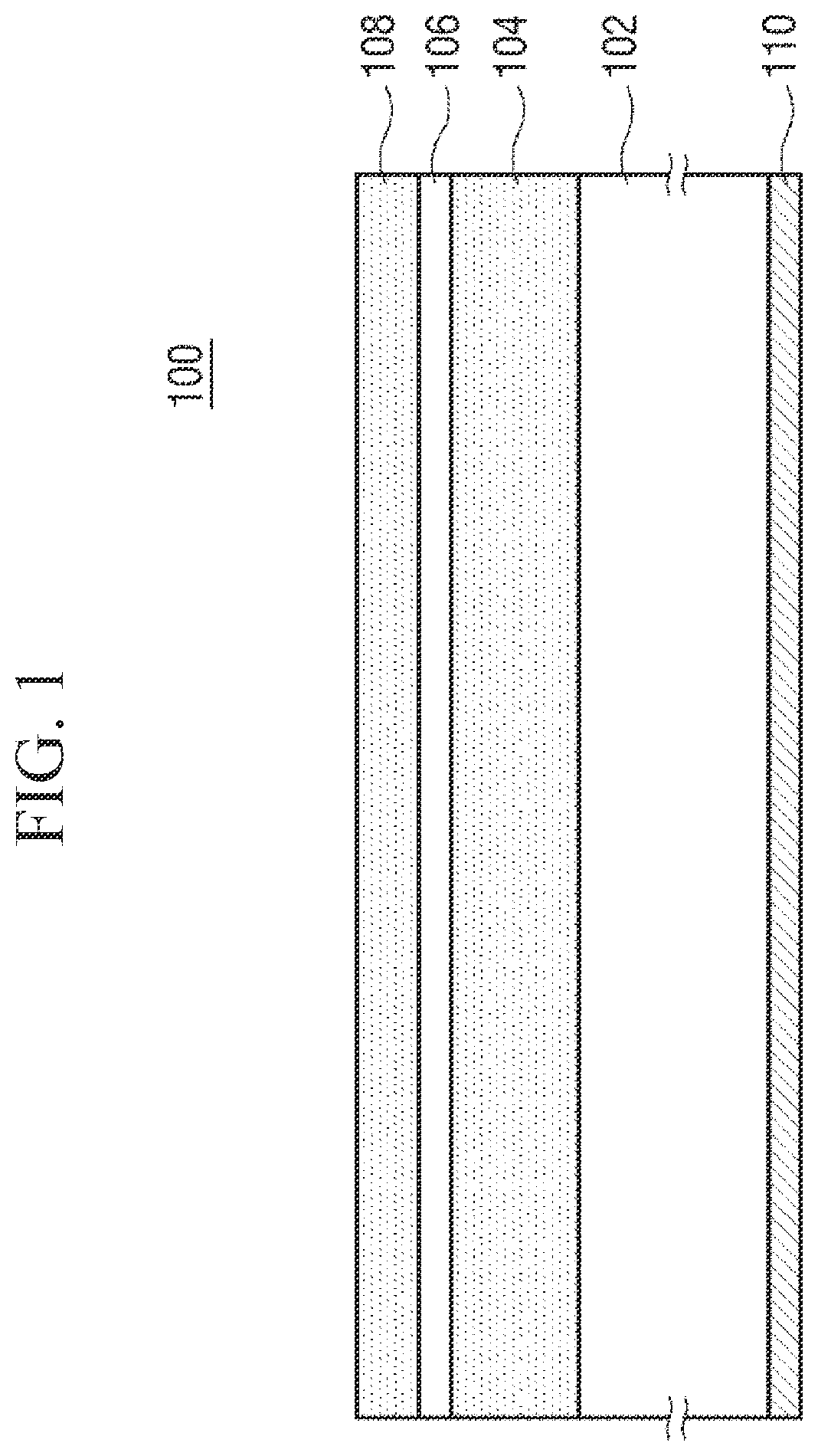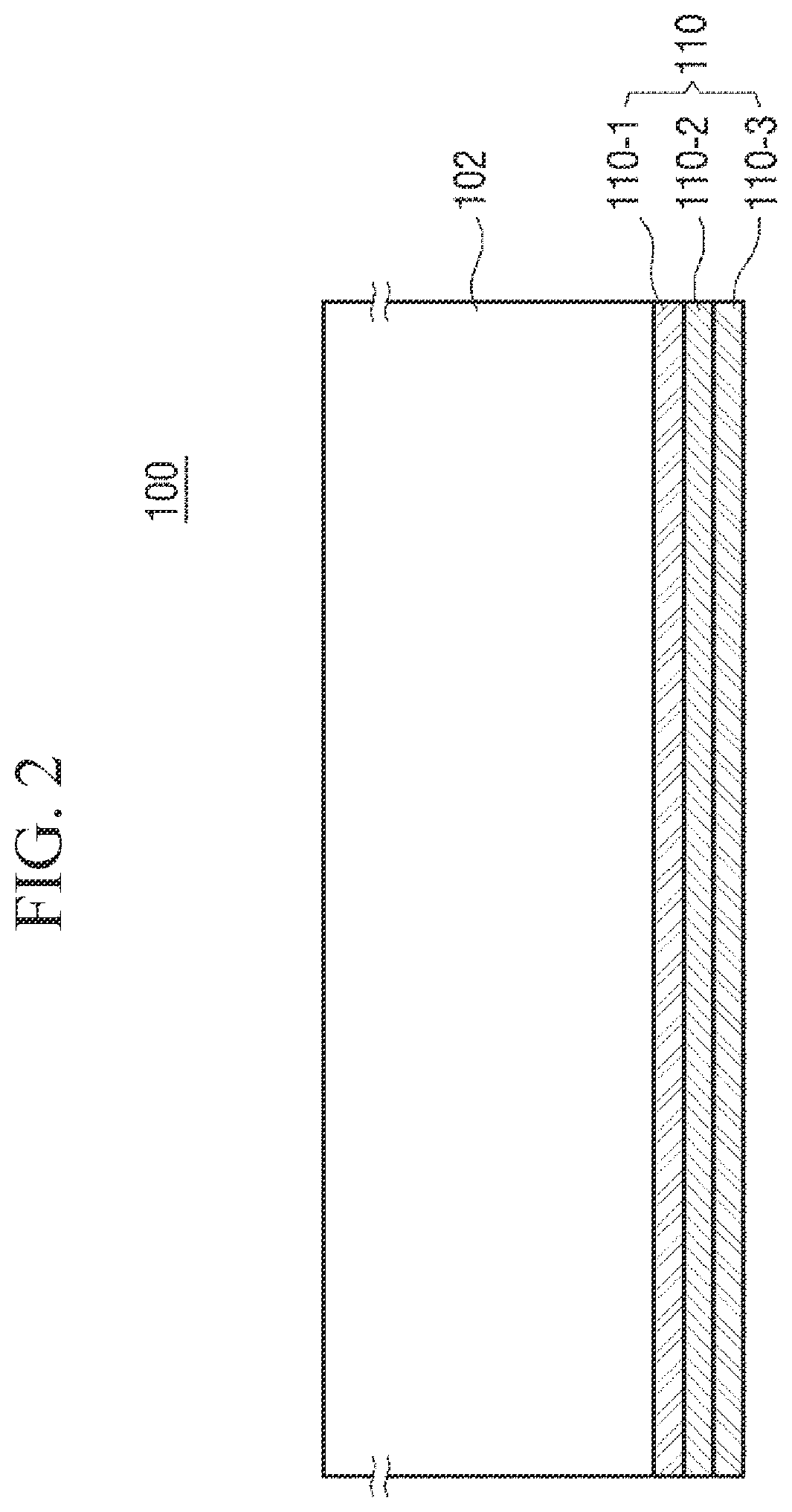Blankmask and photomask for extreme ultraviolet lithography
a technology of ultraviolet light and blank mask, applied in the field of blank mask and photomask for ultraviolet light lithography, can solve the problems of increasing the probability of occurrence of footing phenomenon, fatal effect on resolution, and inability to use the existing refractive optical system of euv lithography, so as to improve the flatness of the euv blank mask, prevent oxidation and defects of the capping film, and improve the effect of flatness
- Summary
- Abstract
- Description
- Claims
- Application Information
AI Technical Summary
Benefits of technology
Problems solved by technology
Method used
Image
Examples
Embodiment Construction
[0047]FIG. 1 is a cross-sectional view illustrating a blankmask for extreme ultraviolet lithography according to the disclosure.
[0048]Referring to FIG. 1, a blankmask 100 for extreme ultraviolet lithography according to the disclosure includes a transparent substrate 102 and a reflection film 104, a capping film 106, and an absorbing film 108 that are sequentially stacked on the transparent substrate 102. In addition, the blankmask 100 includes a conductive film 110 provided on a rear surface of the transparent substrate 102.
[0049]The transparent substrate 102 is a glass substrate for a reflective blankmask using EUV exposure light of 13.5 nm, and preferably uses a low thermal expansion material (LTEM) substrate having a low coefficient of thermal expansion in a range of 0±1.0×10−7 / ° C., and preferably 0±0.3×10−7 / ° C. in order to prevent deformation of a pattern due to heat and stress due to a thin film during exposure. To this end, the transparent substrate 102 may be made of a mat...
PUM
| Property | Measurement | Unit |
|---|---|---|
| surface roughness | aaaaa | aaaaa |
| thickness | aaaaa | aaaaa |
| temperature | aaaaa | aaaaa |
Abstract
Description
Claims
Application Information
 Login to View More
Login to View More - R&D
- Intellectual Property
- Life Sciences
- Materials
- Tech Scout
- Unparalleled Data Quality
- Higher Quality Content
- 60% Fewer Hallucinations
Browse by: Latest US Patents, China's latest patents, Technical Efficacy Thesaurus, Application Domain, Technology Topic, Popular Technical Reports.
© 2025 PatSnap. All rights reserved.Legal|Privacy policy|Modern Slavery Act Transparency Statement|Sitemap|About US| Contact US: help@patsnap.com


